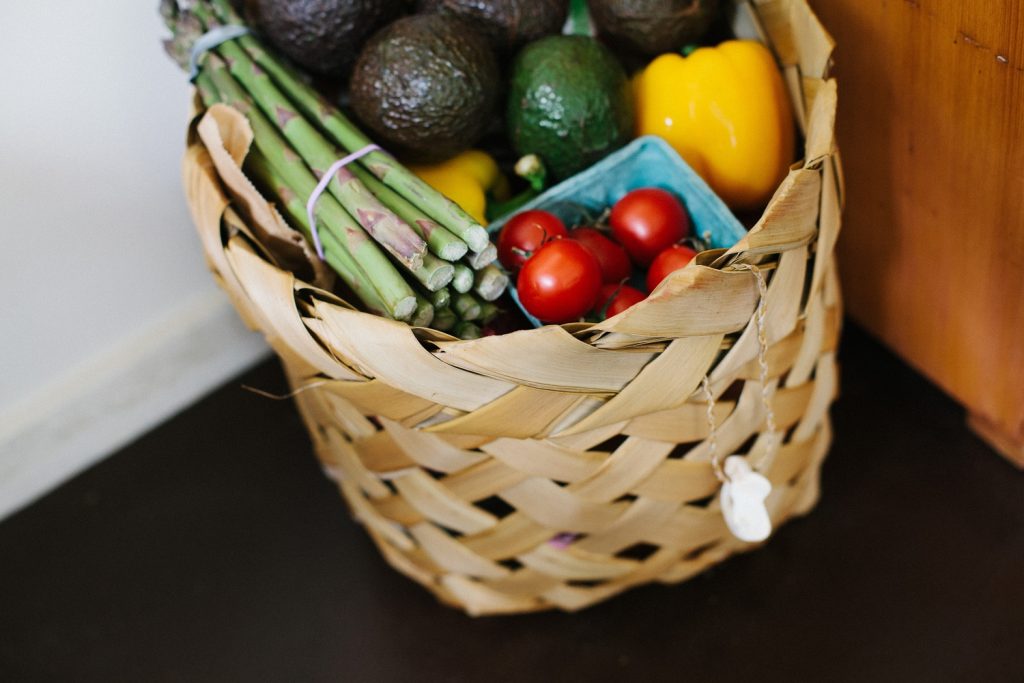Let’s face it. Grocery shopping, meal planning, and cooking consume a large percentage of our time and finances – day after day, week after week. But, luckily, this is an area that we have a lot of say over – where we shop, how much we’ll spend, what meals we’ll make. With some minor changes, we can streamline the whole process and save a buck in the process. Here are 10 ways to simplify groceries:
1.Use a Rewards Program.
I’ve been using the Fetch Rewards app for awhile now, and it’s great! All you do is scan your grocery receipts, which equate to points that turn into savings. I scan the receipt before I even leave the parking lot – just so I don’t forget or lose the receipt. Once you’ve accumulated enough points, you can select from a number of reward options. I always choose some $ toward Amazon. Give it a try!



2. Have a budget.
Groceries is one area of your finances that’s relatively easy to adjust, without feeling deprived. A starting point could be $150/person per month, but depending on cost of groceries where you live, the types of food you like to eat, the stores you prefer, and a number of other factors, your number could be higher or lower. Start with whatever you currently spend, then gradually decrease every week from there until you’ve reached the point where you can’t reasonably decrease further.
The number isn’t the point. The point is finding a budget that works for you, and sticking to it by adopting some habits (from this list of 10) that free up cash to be used for more appealing things than a gallon of milk;)!
3. Plan number of dinners.



I find breakfast and lunch to be easy enough to wing, but, I like to at least estimate the number of dinners per week that will be made at home. Take into account how many times you’ll eat out, get take out, and consume leftovers. Some people meal plan to the nines every week – that’s very aspirational. For the rest of us, it’s a great start to decide on the number of dinners, and ensure you have the ingredients on hand to pull those meals together.
4. Start with what you have.
Where’s the first place we typically turn to when planning meals for the week? Pinterest or the internet, perhaps? I find Pinterest to be a source of inspiration, but find I’m starting from square one when a recipe catches my eye – with a total disregard for what I ALREADY HAVE! Start with your refrigerator instead!



What do you already have that may be hiding in the back needing to be eaten up? See what meals you can make from there, only adding those supplemental ingredients to your grocery list – whatever you need to turn that ground turkey into some mean turkey burgers!
5. Keep a running grocery list.
Throughout the week, you’re continually consuming groceries. You just ran out of eggs….add it to the list right then! Your toothpaste is running low. Add it to the list right away! You get the drift! Have one central place for your list and ask that everyone contributes. Don’t rely on your memory or you’ll be bound to forget things and have to go back to the store again. Bonus tip – if you’re familiar with your store, try writing your list in the order of the aisles so that your shopping will be extra efficient!
6. Bring your list to the store.



We’ve all been there. You somehow end up at the grocery store, famished, and without a plan or list. Not good on the budget or the food choices. Make sure you bring a list to keep you on track.
7. Purchase in bulk strategically.
I have a love/hate relationship with Costco. More of a love relationship, but it’s all too easy to blow your budget there (the Target of the food world).
Also, bulk purchases take up precious space in your home. So, purchase in bulk strategically. This means sticking to your budget and only buying what you have space for! If you have a tiny kitchen/home and no space for 20 paper towel rolls, don’t buy them.
8. Shop weekly.
Weekly seems to be that sweet spot – not so infrequent that food goes bad, yet not so often that you spend unnecessary time and money running to and from the store. It also feels manageable enough to wrap your head around what’s going on for the next week – when you’ll be out for dinner or have other commitments or scenarios that will impact your food prep and consumption.



If you find it challenging to only shop once/week, revisit tips 2-6 and see if you can up your planning and list making to help accommodate a weekly shopping trip. Sure, sometimes things come up and running to the store to get what you need for that spontaneous hosting is fun! But, keep an eye on the frequency from week to week and you’ll likely find that fewer trips to the grocery store is positively correlated with sticking to your budget.
9. Cook extra.
It’s a lot of effort to cook! You’ll save lots of time by doubling recipes and freezing extras or enjoying them as leftovers.
10. Start a garden.



We planted a garden this year, as a family. It’s great because they kids are involved, they learn about food sources, love to eat what they grow, and you save money. Win-win all around.
I think you’ll find that implementing some of these tips to simplify groceries will help you save time and money – without sacrificing nutrition or preferences. And, who doesn’t want that?

